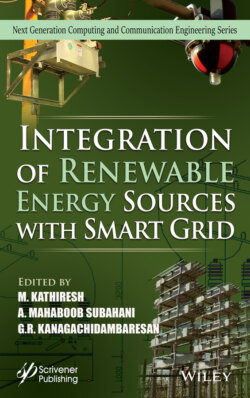Читать книгу Integration of Renewable Energy Sources with Smart Grid - Группа авторов - Страница 27
1.1.6 Geothermal Energy
ОглавлениеAs India is a tropical country, heat energy is abundant on our earth’s crust. The energy obtained from the heat of the inner surface of the earth is geothermal energy. It is the unused heat energy stored under the earth’s surface. It is carried to the earth’s surface by steam and water. It can be used for heating and cooling purpose. The temperature gradient on the earth’s surface with respect to the inner area is only used to generate electricity [12].
There are three types of geothermal power plants: dry steam, flash steam, and binary cycle.
1 (i) Dry Steam: Dry steam power plants draw from underground resources of steam. The steam is piped directly from underground wells to the power plant where it is directed into a turbine/generator unit.
2 (ii) Flash Steam: Flash steam power plants are the most common and use geothermal reservoirs of water with temperatures greater than 360°F (182°C). This very hot water flows up through wells in the ground under its own pressure. As it flows upward, the pressure decreases and some of the hot water boils into steam. The steam is then separated from the water and used to power a turbine/generator. Any leftover water and condensed steam are injected back into the reservoir, making this a sustainable resource.
3 (iii) Binary Steam: Binary cycle power plants operate on water at lower temperatures of about 225°F–360°F (107°C–182°C). Binary cycle plants use the heat from the hot water to boil a working fluid, usually an organic compound with a low boiling point. The working fluid is vaporized in a heat exchanger and used to turn a turbine. The water is then injected back into the ground to be reheated. The water and the working fluid are kept separated during the whole process, so there are little or no air emissions.Currently, two types of geothermal resources can be used in binary cycle power plants to generate electricity: enhanced geothermal systems (EGSs) and low-temperature or co-produced resources [13].a) Enhanced Geothermal Systems:EGS provide geothermal power by tapping into the Earth’s deep geothermal resources that are otherwise not economical due to lack of water, location, or rock typeb) Low-Temperature and Co-Produced Resources:Low-temperature and co-produced geothermal resources are typically found at temperatures of 300°F (150°C) or less. Some low-temperature resources can be harnessed to generate electricity using binary cycle technology. Co-produced hot water is a by-product of oil and gas wells in the United States. This hot water is being examined for its potential to produce electricity, helping to lower greenhouse gas emissions and extend the life of oil and gas fields.
